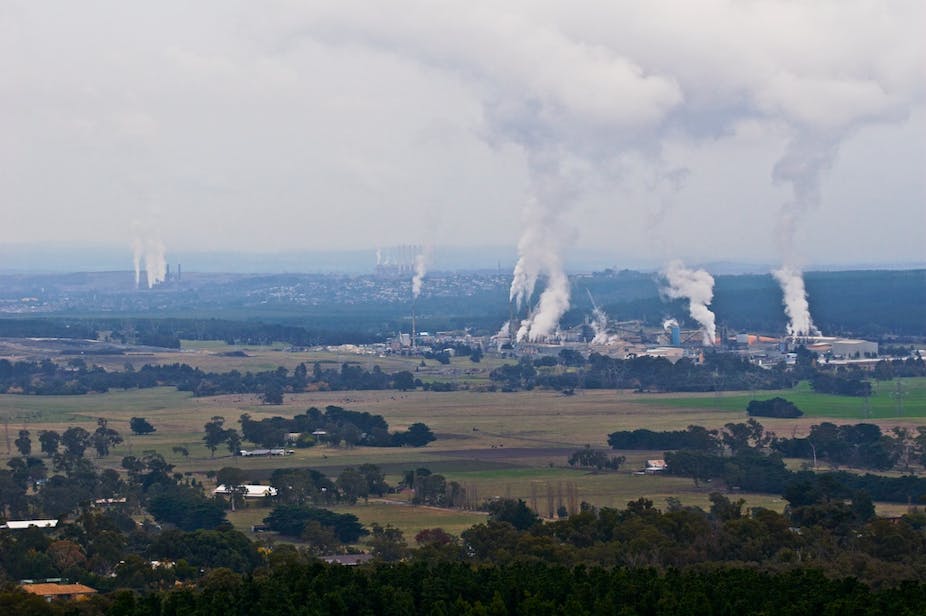Coal remains an important energy resource for Australia providing around 75% of our electricity and some 20% of export income. However it is also responsible for approximately 40% of greenhouse gas emissions.
Over the last decade, carbon dioxide capture and storage (CCS) technology has emerged as an essential pathway for countries dependent on coal for their energy supply but committed to reaching the targets for a carbon constrained global environment.
Post-combustion capture (PCC) is the first stage in the CCS chain. Amine-based liquid absorbents, including ammonia, capture CO₂ from the flue gases before it is emitted to the atmosphere. The captured CO₂ product is pure enough that it is ready for compression, transport and storage.
PCC pilot plants have been set up in other parts of the world, but Australia is a unique place to study this method. We have low-cost coal resources, a highly competitive electricity market, restricted water resources and limited emission controls at power stations.
CSIRO has been working with industrial partners Delta Electricity and Stanwell Corporation, constructing and operating PCC pilot plants at Munmorah (New South Wales) and Tarong (Queensland) power stations to demonstrate carbon capture on actual flue gases during power production. (One of the advantages of PCC is that it can be retrofitted to existing power stations.)
At the PCC pilot plant in Queensland, we used amines as the absorbent and focused on examining different process designs and flow configurations to identify the most effective use of the technology.
The NSW pilot plant demonstrated the use of aqueous ammonia as an absorbent. This is considered by some researchers as the most promising agent for CO₂ capture.
In both plants more than 85% of the carbon dioxide present in the flue gas was captured as a result of the chemical reaction between carbon dioxide and the absorbent. The carbon dioxide was released from the liquid absorbent by heating up the liquid absorbent to the point were the chemical reaction is reversed.
So heat is needed to run the capture process. We looked into using solar thermal energy as a heating source and found that renewables are able to reduce the additional electricity burden on the power station.
In parallel with the pilot plant program, laboratory studies examined more than 100 different commercially available amine based liquid absorbents. The team also explored the synthesis of “designer amines”. These are specifically designed and optimised for use as liquid absorbents for PCC.
As an alternative to amines, ionic liquids showed considerable promise. They are chemically robust, also at the higher temperatures needed for the release of the captured carbon dioxide. The absorbent robustness is particularly important in the challenging conditions of Australian power plants where there are limited emission controls. The ionic liquids we produced during this study improved CO₂ absorption capacity and reduced energy consumption by 70% compared to the standard amine based process.
One of the important aspects of the program was that the power companies taking part now fully understand how PCC technology can reduce greenhouse gas emissions.
There are still challenges before PCC can be commercially implemented. The capital cost of the PCC plant will have to come down. So will the “efficiency penalty” - currently the capture of 90% carbon dioxide results in a 30% loss in electricity output at the power station. PCC will also have to be demonstrated on a large and integrated plant as part of an overall carbon capture and storage chain.
CSIRO is working on improving the capture process and reducing efficiency penalties. This should substantially reduce the costs of installing and operating a PCC system.
While Australia continues to rely heavily on its low-cost and easy-to-mine coal reserves, technology can be retrofitted to the power sector to reduce its contribution to Australia’s CO₂ emissions.

